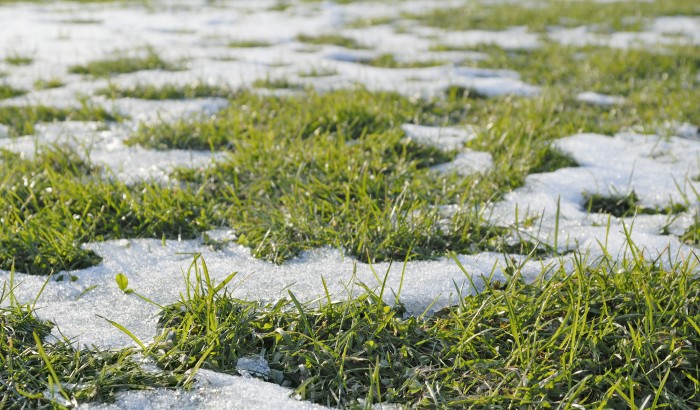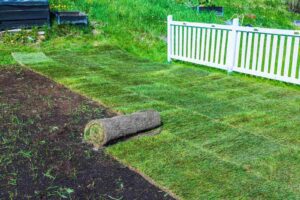Colder weather is here, and if you’ve laid new sod, you need to know how to water new sod in winter.
Considering most things aren’t growing during winter, it may seem counterintuitive to plant sod during this cold part of the year. The fact is, most perennials have a dormant season, and grass is no different. If you’re planting your sod during the winter, the grass is simply in its normal dormant state, and with proper care, it will green up come spring. As always, one of the key steps of installing new sod is making sure it receives adequate water. Winter is a tricky time to water, particularly in places like Utah, where ground temperatures can freeze.
Read on for some tips on how to care for your new sod in the cold weather.
Things to Consider When Planting Sod in Winter
It’s important to note that sod can be planted during any season, even here in Utah. Summer and fall may be more ideal times, but with proper care, winter is definitely still a possibility. As with any season, you’ll simply want to be aware of the challenges and methods to take into account to ensure you have a healthy turf come spring. One of the main challenges is that watering is more difficult during winter.
Due to freezing temperatures, it’s a good rule of thumb to winterize your sprinklers and blow out the lines to prevent pipes from cracking and leaking. Another consideration is that many municipal water supplies are shut off in late fall, which means you may need to use your culinary water supply to water in your new sod. This is usually accessed from the outdoor spigot on your house exterior. As a result, during the winter, you’ll likely need to water your new sod by hand, using a hose.
Tips for Watering New Sod in Winter
While the principle of watering new sod in well remains the same, the way you go about it will differ slightly, taking into account the colder weather. Here are some tips:
- Water during mid-day when temperatures are warmest. This helps to make sure water actually reaches the roots of the sod before freezing.
- Only water if the temperature of the air is 40 degrees or above, and the ground is not frozen.
- Take into account snow and other precipitation and adjust your watering accordingly. You may only need to water once or twice each month through the dormant winter season, depending on the amount of snow or rain. Dormant grassroots still need about 0.25 inches of water weekly to become established.
- Make sure all areas of the sod receive adequate water. Edges, corners, and areas closer to buildings all have a tendency to dry out faster and may need more water.
- As always, try to stay off new sod as much as possible. During freezing weather, walking on the grass can cause the frozen crowns to break, killing the young plants.
Contact Monarch Sod
As you can see, laying new sod in winter is possible, and you can still see great success provided you water adequately. If you’re ready to lay some sod in preparation for next spring’s green lawn, Monarch Sod has got you covered. Contact us for premium quality Utah sod, including delivery and installation all along the Wasatch Front. We serve Utah, Salt Lake, and Davis counties in Utah.var /*99586587347*/












